A Crash Course in Giant Robots with the Owl in the Rafters – mk.2

Welcome back to the Owl in the Rafters’ Crash Course in Giant Robots: Round 2. Last time, I tried to go over as briefly as possible, the major stepping stones in the development of the Giant Robot genre of anime from its conception in the 1950s, up until the dawn of the Gundam franchise in 1979. Today we pick up with the original Mobile Suit Gundam and how it changed the face of giant robots.
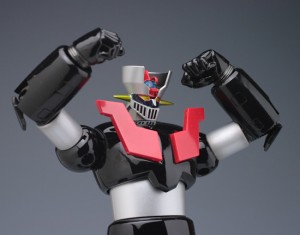 Prior to the debut of Mobile Suit Gundam, giant robots were a kind of superhero icon for the Japanese. Some anime scholars (yes, that is a thing) believe that Japan’s cultural obsession with super science derives from certain insecurities stemming from WWII, and a theorized subconscious belief that the biggest deciding factor in the war had been Japan’s lack of technological resources. That said, much like the caped and masked heroes of American comic books reflect a cultural value placed on uncompromising and incorruptible morals in the face of organized crime and political/corporate corruption, the Japanese Super Robots reflect the value Japan placed on the unstoppable power of science and technology pitted against outside invaders.
Prior to the debut of Mobile Suit Gundam, giant robots were a kind of superhero icon for the Japanese. Some anime scholars (yes, that is a thing) believe that Japan’s cultural obsession with super science derives from certain insecurities stemming from WWII, and a theorized subconscious belief that the biggest deciding factor in the war had been Japan’s lack of technological resources. That said, much like the caped and masked heroes of American comic books reflect a cultural value placed on uncompromising and incorruptible morals in the face of organized crime and political/corporate corruption, the Japanese Super Robots reflect the value Japan placed on the unstoppable power of science and technology pitted against outside invaders.
What I want to impress upon you about the Gundam series is that while it has since become an ongoing franchise built toward marketable success, and while other titles have risen to take up its crown of “realism,” Gundam was the first big series to propose the simple idea that giant robots as military weapons akin to tanks and fighter jets, and not some autonomous, privately owned super weapon in the hands of a child. In particular, and really more or less exclusively, the U.C. (Universal Century) time line helped to pioneer this push towards making giant robots a vehicle for a more serious subject, and by association anime as a whole.
Of course, the original Mobile Suit Gundam (aka Gundam 0079 for clarity) stuck very close to giant robot formula: the hero was still a gifted young boy, the robot still had a special tie to the hero, there was still a enemy-of-the-week formula, and the fight scenes were still more sensational than “realistic,” but at the same time Gundam introduced real interpersonal drama with consequences on the plot, robots fought more like soldiers rather like pro-wrestlers or super heroes, and while there were still clear heroes and villains, the moral gray extended to both warring factions.
To give a brief overview of the setting: in the distant future, mankind faced the threat of overpopulation and began moving the overflowing population into clusters of orbital space colonies called “Sides,” situated in Lagrange points. (ideal locations in the Earth’s gravitational pull for stable orbital body) This marked the start of the Universal Century.
 79 years after the first colonies were launched, generations of social tension between the inhabitants of Earth and the space colonies (“Earthnoids” and “Spacenoids,” respectively) culminated in a cluster of colonies, calling themselves the Principality of Zeon, declaring a war of independence on the Earth Federation. The Zeon sought to unite and liberate the oppressed Spacenoids from the governance of the Earth Federation. This began The One Year War, the central subject of the Gundam franchise.
79 years after the first colonies were launched, generations of social tension between the inhabitants of Earth and the space colonies (“Earthnoids” and “Spacenoids,” respectively) culminated in a cluster of colonies, calling themselves the Principality of Zeon, declaring a war of independence on the Earth Federation. The Zeon sought to unite and liberate the oppressed Spacenoids from the governance of the Earth Federation. This began The One Year War, the central subject of the Gundam franchise.
Also worth noting is that in the U.C. Gundam setting, exist what are called Newtypes. The Newtypes are (in their best interpretations) semi-clairvoyant and empathic ace-pilots whose extra sensory perception manifests itself in what appears to be inhumanly fast reflexes. In some of the less subtle (and in my own opinion, less graceful) interpretations, the Newtypes have a wide range of arbitrary psychic powers from involuntary episodes of clairvoyance, to mass telepathic communication, a limited ability to read minds, and psychokinesis. Generally all of the lead heroes in the Gundam franchise turn out to be Newtypes.
 Gundam 0079 specifically followed a boy named Amuro Ray after a Zeon attack on his home colony forced him and a large number of civilians to take refuge in an Earth Federation mobile base called the White Base. With most of the crew dead or injured, and the new captain just 19 years old himself, the White Base must continue its military service with a crew of volunteers and fresh recruits.
Gundam 0079 specifically followed a boy named Amuro Ray after a Zeon attack on his home colony forced him and a large number of civilians to take refuge in an Earth Federation mobile base called the White Base. With most of the crew dead or injured, and the new captain just 19 years old himself, the White Base must continue its military service with a crew of volunteers and fresh recruits.
As I mentioned, Amuro is still a typically “special” young boy, with a knack for mobile suit mechanics, son of the inventor of the Gundam, and the Gundam’s only suitable pilot on board the White Base, but he is also just a civilian and a child and throughout the show he must learn to cope with the responsibilities of being the Gundam’s pilot, as well as the responsibilities of being a soldier.
The original run of the first Gundam series was actually not very well received according to TV ratings and was initially going to be cut from 52 episodes down to 39, but was compromised at 43. It was not until sales reports of Bandai’s line of Gundam models proved that the title was actually wildly popular and the series was rebroadcast in 1980 and 1981 with significantly better ratings, eventually leading to the trilogy of compilation films, that not only meshed key events of the series together, but even edited some portions of the story. For the first time, the space-opera-like drama appeal of shows like the hit Space Battle Ship Yamato, was joined with Japan’s unique Giant Robot genre, breaking the genre into two new subcategories: Super Robot and Real Robot.
Although I personally still love the original Mobile Suit Gundam, and cannot help but love it for everything it has accomplished, I will say this: The original Gundam has not aged particularly well. Given the project’s experimental nature, and previously mentioned lack of initial popularity, the TV series suffered under poor budget and pressed deadlines, and it shows. The plot and story were groundbreaking steps forward at the time, but from a modern perspective may seem underwhelming. While I can safely say that the original Gundam is an absolute must-see for any die hard giant robot fan, I’d have to recommend the movie trilogy over the original TV series. As for those less enthusiastic about their giant robots, it might actually worth skipping if you’re willing to do your research instead.
Now, I’d like to point out that the continuation of the U.C. timeline jumps around a bit over the years, with later OVAs and movies returning to points prior to or parallel to the original series, but I will be covering the shows in the order they were released and not in the order they follow on the U.C. timeline.
 In 1985, just three years following the last of the three Gundam films, Sunrise released a direct sequel to the first Mobile Suit Gundam, Mobile Suit Zeta Gundam. (aka Mobile Suit Z Gundam) Riding the newfound mass popularity of the Gundam title, Z Gundam saw a significant step up in financial backing, improving both art and animation quality significantly.
In 1985, just three years following the last of the three Gundam films, Sunrise released a direct sequel to the first Mobile Suit Gundam, Mobile Suit Zeta Gundam. (aka Mobile Suit Z Gundam) Riding the newfound mass popularity of the Gundam title, Z Gundam saw a significant step up in financial backing, improving both art and animation quality significantly.
Z Gundam followed protagonist, Kamille Bidan, yet another young civilian boy, the son of mobile suit engineers, and a gifted pilot, but with serious personality drawbacks. Amuro was a brooding and often selfishly inactive hero, but Kamille proves to be just as selfish but all too quick to act: a loose cannon, and both bitter and spiteful of the people who don’t take him seriously. Along with various plot developments, Kamille’s naturally hotheaded personality and anti-authoritarian attitude push Kamille to steal the Gundam Mk.II and join the AEUG, (Anti-Earth Union Group) a terrorist group rebelling against the now corrupt Earth Federation’s control over the colonies.
Thematically, Z Gundam actually mirrors many of the original Gundam 0079‘s key features highlighting the teen heros’ struggle with responsibility, discipline, death, fear, and love. Several central characters make cameos, two play integral roles in the new plot, and old archetypal roles are filled. It also begins to flesh out more of the U.C. setting. The series ran for 50 episodes and in 2005 (Gundam’s 25th anniversary) got a compilation film trilogy, just like the first series, with new scenes and edits added in.
 Almost immediately following Z Gundam, Sunrise launched right into Mobile Suit Gundam ZZ (aka Mobile Suit Gundam Double Zeta) which, just as the name would suggest, acts as a direct sequel to its preceding series. However, Gundam ZZ saw a notable change of staff, with mechanical designer K. Okawara (creator of the original Gundam), and M. Nagano and K.Fujita (key designers in Z Gundam) replaced by three new designers with their own unique, but very noticeably different sense of style.
Almost immediately following Z Gundam, Sunrise launched right into Mobile Suit Gundam ZZ (aka Mobile Suit Gundam Double Zeta) which, just as the name would suggest, acts as a direct sequel to its preceding series. However, Gundam ZZ saw a notable change of staff, with mechanical designer K. Okawara (creator of the original Gundam), and M. Nagano and K.Fujita (key designers in Z Gundam) replaced by three new designers with their own unique, but very noticeably different sense of style.
Gundam ZZ picks up where Z Gundam left off, and begins by recruiting a team of teenage scrappers to the heroes’ ship to make up for lost numbers in the final battle of Z Gundam. Although the new lead character, Judau Ashta, is of course the pilot of the Double Zeta Gundam, but the major suits of the previous series return in key roles on the heroes’ side, creating the first real team of various different Gundam models: this trend would be revisited much later in the franchise with alternate timeline series like Mobile Fighter G Gundam, New Mobile Report Gundam W, Mobile Suit Gundam SEED, and Mobile Suit Gundam 00.
Also worth noting is the opening theme song, Anime Ja Nai ~Yume o Wasureta Furui Chikyuujin yo~, which translates literally as “It is not Anime ~Ancient Earthman who has Forgotten the Dream~.” A surprisingly bold and proud, if only slightly misplaced, statement in defense of anime, sci-fi, and the genuinely dreamlike fascination that drew people to Gundam and to other space drama anime like Battle Ship Yamato nearly a decade before.
With the end of Gundam ZZ in 1987 began Gundam’s informal TV hiatus: there wouldn’t be another Gundam TV series until 1993. Instead, between 1988 and 1991 there would be a fairly regular string of OVAs and Movies that would help to fill out the events of the One Year War and the story of some of the original cast.
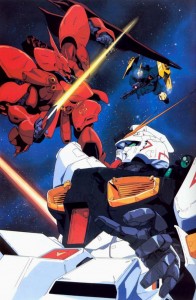 The first of these projects was the Mobile Suit Gundam: Char’s Counterattack film in 1988. This film picked up well after the events of Gundam ZZ, with the reoccurring character, Char Aznable, rekindling the war for independence between the Zeon remnants (now the Neo-Zeon) and the Earth Federation. This film was intended to be a kind of nail in the coffin for the ongoing conflicts of the past three TV series, as it finally ended the last of the major factions opposing the Earth Federation. (This was of course slightly nerfed when the Gundam Unicorn OVAs that began in 2010 jumped started the U.C. again and revived the Neo Zeon forces as antagonists.)
The first of these projects was the Mobile Suit Gundam: Char’s Counterattack film in 1988. This film picked up well after the events of Gundam ZZ, with the reoccurring character, Char Aznable, rekindling the war for independence between the Zeon remnants (now the Neo-Zeon) and the Earth Federation. This film was intended to be a kind of nail in the coffin for the ongoing conflicts of the past three TV series, as it finally ended the last of the major factions opposing the Earth Federation. (This was of course slightly nerfed when the Gundam Unicorn OVAs that began in 2010 jumped started the U.C. again and revived the Neo Zeon forces as antagonists.)
I should point out that there are some frequent disputes over Char’s Counterattack and its effects on the continuity, as some fans disagree strongly with the characterization of Char and his motives in the film.
 In the year following, Sunrise released a Gundam 10th Anniversary project, and what may be one of my personal favorite installations of the Gundam franchise, its first OVA series, Mobile Suit Gundam 0080: War in the Pocket. It also marked the first animated Gundam story not written and directed by Yoshiyuki Tomino, who had consistently filled both roles for the past decade. War in the Pocket‘s script was written by Hiroyuki Yamaga (a key creative member of Gainax studios) and directed by Fumihiko Takayama. (director of the original Bubblegum Crisis, Orguss 02, and the third Patlabor movie)
In the year following, Sunrise released a Gundam 10th Anniversary project, and what may be one of my personal favorite installations of the Gundam franchise, its first OVA series, Mobile Suit Gundam 0080: War in the Pocket. It also marked the first animated Gundam story not written and directed by Yoshiyuki Tomino, who had consistently filled both roles for the past decade. War in the Pocket‘s script was written by Hiroyuki Yamaga (a key creative member of Gainax studios) and directed by Fumihiko Takayama. (director of the original Bubblegum Crisis, Orguss 02, and the third Patlabor movie)
Turning the calendar back to the eve of 0080, just mere days before the end of the war. Zeon troops have been sent into a neutral colony to investigate rumors of the Earth Federation using the demilitarized territory as a cover for a secret military facility. Sure enough, the colony is housing the secret construction of a new prototype Gundam.
The story follows an 11 year old boy named Alfred (Al for short) who, along with his school mates, are fascinated and excited by the action packed stories of war and the exploits of its soldiers on both sides. But when the Zeon spies make their entrance, Al accidentally catches one of the rookie mobile suit pilots and later identifies him in his civilian disguise. In order to keep their operation secret, the Zeon team humors little Al, letting him help them get around the colony while pretending he’s a part of the team.
From the perspective of a young boy engrossed in action packed war-time fantasy stories, the Gundam franchise showed a grimmer side to the exciting war stories of the past Gundam titles. There was no war hero, there was no glory, and the ending was tragic and punctuated by the trauma of a child that no one around him could properly understand, let alone sympathize with. It was a nice refreshing change of pace that still stuck to the central values of a more “realistic” (I do try and use that word lightly) war drama in a giant robot anime.
Moving right along -because we still have a lot of material to cover and I’m pushing it as is- we come to the Mobile Suit Gundam F91 movie of 1991, as well as the Mobile Suit Gundam 0083: Stardust Memory OVA of the same year.
 As the rumors go, F91 was supposed to be a television series all its own. Set 30 years after Char’s Counterattack, in the distant future of U.C. 0123, F91 takes place in an age of peace where The One Year War of 0079 is nothing more than a subject for history text books and museums. While the new Frontier colonies begin to populate the former site of the Side 5 colonies lost in the war, a privately owned army of mobile suit pilots calling themselves the Crossbone Vanguard. Given the weakening of the Earth Federation military during the times of peace, the audacious Crossbone Vanguard easily out match their opponents. Naturally, this is where the Gundam F91 comes into play.
As the rumors go, F91 was supposed to be a television series all its own. Set 30 years after Char’s Counterattack, in the distant future of U.C. 0123, F91 takes place in an age of peace where The One Year War of 0079 is nothing more than a subject for history text books and museums. While the new Frontier colonies begin to populate the former site of the Side 5 colonies lost in the war, a privately owned army of mobile suit pilots calling themselves the Crossbone Vanguard. Given the weakening of the Earth Federation military during the times of peace, the audacious Crossbone Vanguard easily out match their opponents. Naturally, this is where the Gundam F91 comes into play.
Like past Gundam series, the main character, Seabrook Arno, is the son of an engineer involved in the development of Gundam. As a gifted engineering student himself, Seabrook is quick to take to the operations of machines, and when during an attack on his home colony, he stumbles into his mother’s creation, he quickly mounts it in defense of his home town.
All in all the F91 movie is superbly animated and fairly well directed, (the initial attack in episode 1 conveys the ground level effects of an urban mobile suit battle with all the beautiful intensity of a disaster film) but suffers every fault you would come to expect from a 50 episode project cut down to just 115 minutes.
I’ve been ignoring the various Gundam manga and novels up until now for the sake of space, but I’ll point out that Yoshiyuki Tomino did release both a full novelization of the Gundam F91 story and the Crossbone Gundam manga as a direct sequel that do the intended story a bit better justice, although neither have seen any international release.
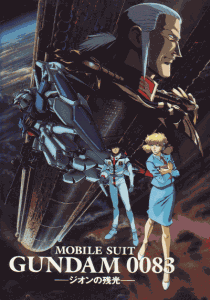 The second big 1991 project was Mobile Suit Gundam 0083: Stardust Memory, a thirteen episode OVA, later collected into a 120 minute movie. Taking a step back to the years following the One Year War of 0079, Stardust Memory centers around a young Earth Federation test pilot, Kou Uraki, (for once, not a civilian) who first happens into the cockpit of a new model Gundam when Zeon war hero, Anavel Gato, steals a nuclear equipped Gundam unit from its Earth Federation ship, the Albion. The rest of the series focuses on Albion’s crew trying to track down and recapture the hijacked Gundam, while Kou struggles with his own ego and confidence as a pilot, as well as his romantic relationship with the Gundam’s chief mechanic, Nina Purpleton.
The second big 1991 project was Mobile Suit Gundam 0083: Stardust Memory, a thirteen episode OVA, later collected into a 120 minute movie. Taking a step back to the years following the One Year War of 0079, Stardust Memory centers around a young Earth Federation test pilot, Kou Uraki, (for once, not a civilian) who first happens into the cockpit of a new model Gundam when Zeon war hero, Anavel Gato, steals a nuclear equipped Gundam unit from its Earth Federation ship, the Albion. The rest of the series focuses on Albion’s crew trying to track down and recapture the hijacked Gundam, while Kou struggles with his own ego and confidence as a pilot, as well as his romantic relationship with the Gundam’s chief mechanic, Nina Purpleton.
This OVA features some gorgeous art and animation work, great new mechanical designs as well as redesigns of classic suits, and a solid story that manages to deviate from the typical Gundam formula just enough to be a refreshing change of pace: The hero is an actual military officer and not a civilian, he’s not a high school student, and his parents have no role in the story or in the construction of the Gundam.
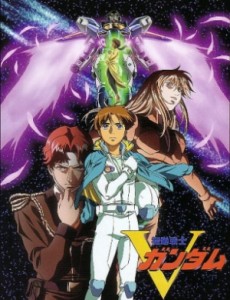 In 1993, Sunrise released Mobile Suit Victory Gundam, the first Gundam TV series since the F91 project was cut back to a single film. Victory Gundam is also notable as the longest of the U.C. TV series, running a full year’s 51 episodes from April to March. The story itself takes place in the year U.C. 0153, and follows the youngest of the main Gundam franchise’s pilots, the thirteen year old Uso Ewin, as he combats the forces of a new spacenoid army threatening the Earth Federation.
In 1993, Sunrise released Mobile Suit Victory Gundam, the first Gundam TV series since the F91 project was cut back to a single film. Victory Gundam is also notable as the longest of the U.C. TV series, running a full year’s 51 episodes from April to March. The story itself takes place in the year U.C. 0153, and follows the youngest of the main Gundam franchise’s pilots, the thirteen year old Uso Ewin, as he combats the forces of a new spacenoid army threatening the Earth Federation.
I must confess, I have not seen Victory Gundam myself, in part due to laziness and in part due to the series’ reputation. You see, during the production of the TV show, Sunrise and Bandai underwent a merging that Gundam creator, Yoshiyuki Tomino, strongly opposed to. I should point out that Tomino has had a rough history with his producers. Due to various issues between Tomino and Sunrise’s sponsors during production, Tomino has often stated that he hates Victory Gundam. Still I have a copy of the Japanese DVDs and have every intention of getting around to it one day. In any case this does have the upside of conveniently saving us a bit of time and space. Moving on!
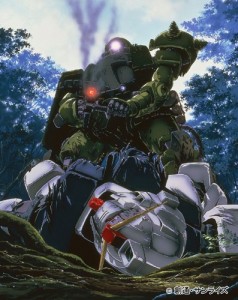 A fan favorite here in the west, the twelve part 1996-99 OVA, Mobile Suit Gundam: 08th MS Team once again rewound the clock to 0079, in the midst of the One Year War. It follows Ensign Shiro Amada, the commander of the titular 08th Mobile Suit Team, stationed in SouthEast Asia. Shiro and his team are tasked with pushing the Zeon forces out of the jungle region, while also tip toeing around the belligerent local guerilla forces of the local inhabitants. Over the course of his mission, Shiro becomes stranded in the mountains with a Zeon soldier, Aina Sahalin, and falls in love with her before the two of them are rescued by their respective allies. With his once gung-ho, model soldier attitude now compromised by his relationship with Aina, Shiro begins to see his role in the war from a darker perspective. As the war comes toward it’s end game and the Zeon forces are weakened, Shiro’s love affair is discovered and he is arrested for treason. However he is given one chance at reprise: he and his team must infiltrate Zeon territory and locate their hidden base in what is tantamount to a suicide mission.
A fan favorite here in the west, the twelve part 1996-99 OVA, Mobile Suit Gundam: 08th MS Team once again rewound the clock to 0079, in the midst of the One Year War. It follows Ensign Shiro Amada, the commander of the titular 08th Mobile Suit Team, stationed in SouthEast Asia. Shiro and his team are tasked with pushing the Zeon forces out of the jungle region, while also tip toeing around the belligerent local guerilla forces of the local inhabitants. Over the course of his mission, Shiro becomes stranded in the mountains with a Zeon soldier, Aina Sahalin, and falls in love with her before the two of them are rescued by their respective allies. With his once gung-ho, model soldier attitude now compromised by his relationship with Aina, Shiro begins to see his role in the war from a darker perspective. As the war comes toward it’s end game and the Zeon forces are weakened, Shiro’s love affair is discovered and he is arrested for treason. However he is given one chance at reprise: he and his team must infiltrate Zeon territory and locate their hidden base in what is tantamount to a suicide mission.
This particular Gundam series is famous for it’s run on Cartoon Network’s Toonami block in 2001 and its particularly down to earth design work painting many of the classic mass produce mobile suit models of the central U.C. series in a much heavier and more metallic color scheme and with a sense of industrial weight that lent itself to the idea that these were not borderline magical super robots, but manufactured war machines. Like the other OVAs of the Gundam franchise, the art and animation are top notch and really paint the Gundam universe in a more vivid light than any of the TV series ever really managed.
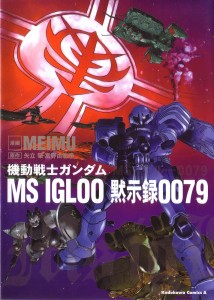 Finally closing in on the current decade, the 2004, MS igLoo: The Hidden One Year War OVA and the sequel OVA, MS igLoo: Apocalypse 0079, released in 2006, were a series of 3D CGI episodes detailing events parallel to the original Gundam 0079 from the perspective of a Zeon “Technical Evaluation Unit”: a team of military hardware testers and their various unfortunate experiences during the war with faulty hardware. The sympathetic but tragic stories of the various sacrifices made in the name of military and corporate politics involved in keeping the One Year War going were remarkably well written and the 3D CGI models for all of the mechanical designs were very impressive. I have to admit that the human 3D CGI models were just a tad lacking, namely in the animation department, with various faces and expressions coming across as bizarre, unnatural, and even comical.
Finally closing in on the current decade, the 2004, MS igLoo: The Hidden One Year War OVA and the sequel OVA, MS igLoo: Apocalypse 0079, released in 2006, were a series of 3D CGI episodes detailing events parallel to the original Gundam 0079 from the perspective of a Zeon “Technical Evaluation Unit”: a team of military hardware testers and their various unfortunate experiences during the war with faulty hardware. The sympathetic but tragic stories of the various sacrifices made in the name of military and corporate politics involved in keeping the One Year War going were remarkably well written and the 3D CGI models for all of the mechanical designs were very impressive. I have to admit that the human 3D CGI models were just a tad lacking, namely in the animation department, with various faces and expressions coming across as bizarre, unnatural, and even comical.
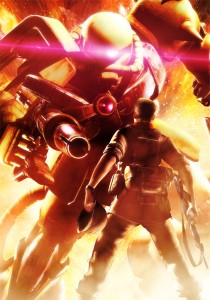 In 2008 there was also the MS igLoo 2: The Gravity Front, which included three more episodes, each with their own independent story lines. The three episodes detailed three different Earth Federation commanders and their bootstrap efforts to combat the Zeon’s devistating mobile suit forces prior to the invention of the Gundam. Each of the three heroes is haunted by the specter of death in the form of a woman in a Zeon uniform, who calls out to each of the heroes, trying to coax them into their tragic deaths. The stories are remarkably well done for such short pieces, and the 3D CGI remains solid.
In 2008 there was also the MS igLoo 2: The Gravity Front, which included three more episodes, each with their own independent story lines. The three episodes detailed three different Earth Federation commanders and their bootstrap efforts to combat the Zeon’s devistating mobile suit forces prior to the invention of the Gundam. Each of the three heroes is haunted by the specter of death in the form of a woman in a Zeon uniform, who calls out to each of the heroes, trying to coax them into their tragic deaths. The stories are remarkably well done for such short pieces, and the 3D CGI remains solid.
And at long last we come to the ongoing Gundam Unicorn project that began in 2010. Based on a 2006-09 novel series by Harutoshi Fukui, Unicorn revives the U.C. time line for the first real time in 17 years, taking place chiefly in 0096. (in between Char’s Counterattack and F91) There have thus far been five of the seven planned episodes released (1 episdoe every 6 months) with direct to BD releases as well as HD Digital downloads on PSN and XBOX360.
 The title “unicorn” has been a slight hurdle for some more dim witted fans who seem to forget that the defining features of the mythical unicorn, apart from the horn, are that they are wild beasts prone to trampling anyone who could not tame them to death, and of course only being tamable by virgins or the pure of heart. They are also symbols associated with cleansing and healing. All these themes are directly applicable to the Unicorn Gundam, and I would imagine deliberately so.
The title “unicorn” has been a slight hurdle for some more dim witted fans who seem to forget that the defining features of the mythical unicorn, apart from the horn, are that they are wild beasts prone to trampling anyone who could not tame them to death, and of course only being tamable by virgins or the pure of heart. They are also symbols associated with cleansing and healing. All these themes are directly applicable to the Unicorn Gundam, and I would imagine deliberately so.
That aside, the series follows Banagher Links, a 16 year old student at the Anaheim Electronics Industrial College. (Anaheim Electronics being the company responsible for the development of the Gundams in all of the past series) In a twist of fate Banagher crosses paths with a girl named Audrey Burne, who turns out to be a decedent of the family that founded the Zeon faction that started The One Year War 17 years prior. Together the two of them attempt to prevent the forces of the Neo Zeon extremists from getting ahold of the Laplace’s Box, a mysterious safe box said to contain the power to dismantle the Earth Federation. Along the way, Banagher of course comes into possession of the titular Gundam Unicorn. As a prototype Gundam the all white appearance of the RX-0 Unicorn is actually a reference to the original design of the very first Gundam TV show’s RX-78, which was originally intended to be all white -supposedly on the basis that guns and tanks aren’t colored bright reds, yellows, and blues like the Super Robot toys of the past- but that idea was scrapped by the show’s sponsors in favor of a more colorful design that was thought to be more conducive to selling toys to children.
While painfully brief in regards to each individual series, this brings us up to date with the major animated affairs of the Universal Century in the Gundam franchise. I hope you’ve either learned just a little something about the history of the name Gundam, or gained some little bit of new found appreciation for the impact the Gundam franchise has had. I know I had hinted that I might consider a 3rd installation to this series of reviews to cover all the alternate time line series that I’ve had to skip over in the franchise’s time line, but I think I will skip on that. I’ve learned here that I just don’t have the space in a single article to adequately detail all of the titles that fall under the Gundam name. I already deeply regret having to cut as much relevant contextual information regarding the changes in the genre as well as the anime and toy industry as I have for the sake of size. So as for now, and for the future, that’ll teach me to tackle a name as big as Gundam without setting aside the proper time and space. As promised, I will be back to my usual update schedule (for the most part) for this August, so expect a new article from The Owl in the Rafters on the 15th!



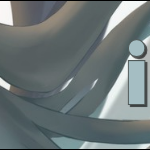

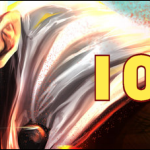










iStalk? uStalk!